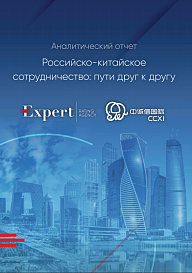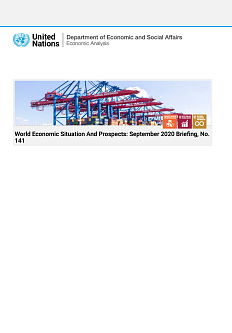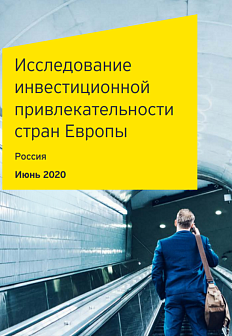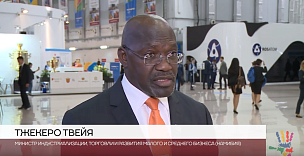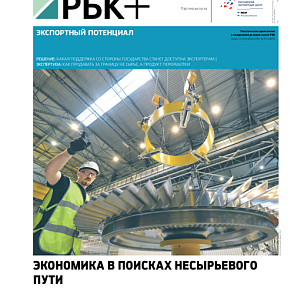Both China’s and Russia’s economies are facing downward pressure
The authors of the joint report by two leading credit rating agencies from China and Russia, CCXI and Expert RA, note a downward trend in the business activity both in China and in Russia. China’s GDP growth rate remains within government-set targets and is still one of the strongest globally. Nevertheless, the Chinese leadership faces a significant challenge to restructure the economic growth model and implemented the supply-side economic reform, which was proposed in 2013. Among the sectors with the highest growth potential in China are information technology and artificial intelligence, electronic commerce, and the service sector. Among the external challenges for the Chinese economic system, one of the most pressing is the currently ongoing trade dispute with the United States, which creates uncertainty for both Beijing and Washington, and for foreign and domestic investors in both countries.
Russia is showing noticeable signs of slowdown in economic growth: it experienced a 2.3% GDP growth in 2018 with a forecast of a further slowdown to 1.5% in 2019. This is largely due to a tough combination of fiscal consolidation and inflation targeting implemented simultaneously by the Russian regulators. Russia’s weak institutional climate remains a remarkable obstacle for its business and investment development, which impedes its growth. Nevertheless, comparatively higher prices for natural resources have been providing relative economic stability, high reserves, and low external debt in Russia. Western sanctions against Russia, however, are creating significant external risks for the Russian economy from the long-term perspective. The Russian energy sector, the largest source of wealth for the state budget, suffers from sanction pressures the most.
Current economic cooperation between Moscow and Beijing remains unbalanced
In this challenging environment for both Moscow and Beijing, the complementarity of the Russian and Chinese economies is growing. China has been Russia’s first trade partner since 2010 (as a nation-state), while Russia was the 10th trade partner for China in 2018. The trade turnover between China and Russia has been growing fast over the last five years and showed a 27.1% increase in 2018, reaching $107bn. Nevertheless, most of this growth can be attributed to a «low-base effect»: bilateral trade plummeted in 2014 amid the first rounds of anti-Russian economic sanctions introduced by western countries and the volatility of the ruble. However, economic cooperation between Moscow and Beijing remains unbalanced and concentrated around a specific group of sectors. While China is the leading supplier of machinery, electronics, and consumer goods to Russia, 60% of Russia’s exports to its eastern neighbor are hydrocarbons.
Sino-Russian investment cooperation has also seen unbalanced development with its concentration on a small number of industries and regions. Despite the positive relationship between Moscow and Beijing, Russian FDI to China is very limited in scale and mainly flows to the wholly owned subsidiaries of Russian companies in China. In 2017, the amount of Russian FDI to China reached $33mn, which was a considerable increase from just $6mn in 2016. Meanwhile, China’s FDI to Russia grows at a comparatively slow pace and is subject to some volatility (Russia’s share among Chinese FDI globally has rarely exceeded 1 percent).
In addition, Sino-Russian bilateral cooperation in capital finance, albeit significantly strengthened in recent years, is still in its infancy. In order to avoid exchange rate risks and improve the convenience of bilateral trade, bilateral currency cooperation is steadily advancing. In November 2017, China and Russia renewed the currency swap agreement of 150bn yuan / 1.325tn rubles, and the Sino-Russian currency swap line reached 943bn rubles in the first 10 months of 2018, about 1.5 times that of 2017.
Sino-Russian cooperation still faces multidimensional constraints
At the macro level, against the background of subdued global growth, as well as the increasingly complicated and uncertain international situation, China and Russia are facing several downside risks. In the case of China, the long-standing trade dispute with the U.S. has put pressure on its exports and investment. Political sanctions against Russia obstruct the Sino-Russian investment and business relationship to a significant extent. The institutional environment also matters in bilateral cooperation and has significant room for improvement.
Information asymmetry appears to be a more direct factor restricting the development of bilateral cooperation. Investors in both China and Russia lack a comprehensive understanding of the current situation of bilateral economic development and the trends in industrial development. Furthermore, political factors could distort the risk assessment of specific enterprises, given that some sanctioned Russian companies are financially strong and bear a low credit risk.
There is still huge room for the development of better bilateral cooperation
Traditional cooperation in the energy and infrastructure fields is still of great importance considering the two countries’ energy structures, and cooperation in other fields such as high-tech, e-commerce, agriculture, as well as the financial sector have significant growth potential. Infrastructure modernization is one of Russia’s top priorities, and China has advantages in terms of technical skills and financing. The high-tech field holds a lot of potential for Sino-Russian cooperation.
Amid the growing demand for high-quality agricultural goods in China and the ongoing trade war between Washington and Beijing, which puts limitations on Chinese agricultural imports from the U.S., Russia could become a major destination for China’s agricultural investments. The Russian Far East is located in the immediate geographical proximity to China and could potentially become one of the largest recipients of China’s outward agricultural investments due to the low land rent and low prices for energy in the region.
Rating agencies’ role in risk evaluation and reducing information asymmetry is essential
The authors of the report point out that credit rating, as a basic institutional arrangement in the bond market, will play an increasingly significant role by helping investors effectively and reasonably identify and evaluate credit risks and reduce information asymmetry. Compared with the three major rating agencies in the global realm, CCXI and Expert RA are still in the growth phase and are taking early steps toward globalization.
However, years of local rating experiences along with insights into China and Russia’s economic environments and political systems, indicates their inherent information advantages as local entities. With a seeming clairvoyance toward the credit risks of various domestic bond issuers, CCXI and Expert RA could help overseas investors understand the business logic of local enterprises and make better risk evaluations.


